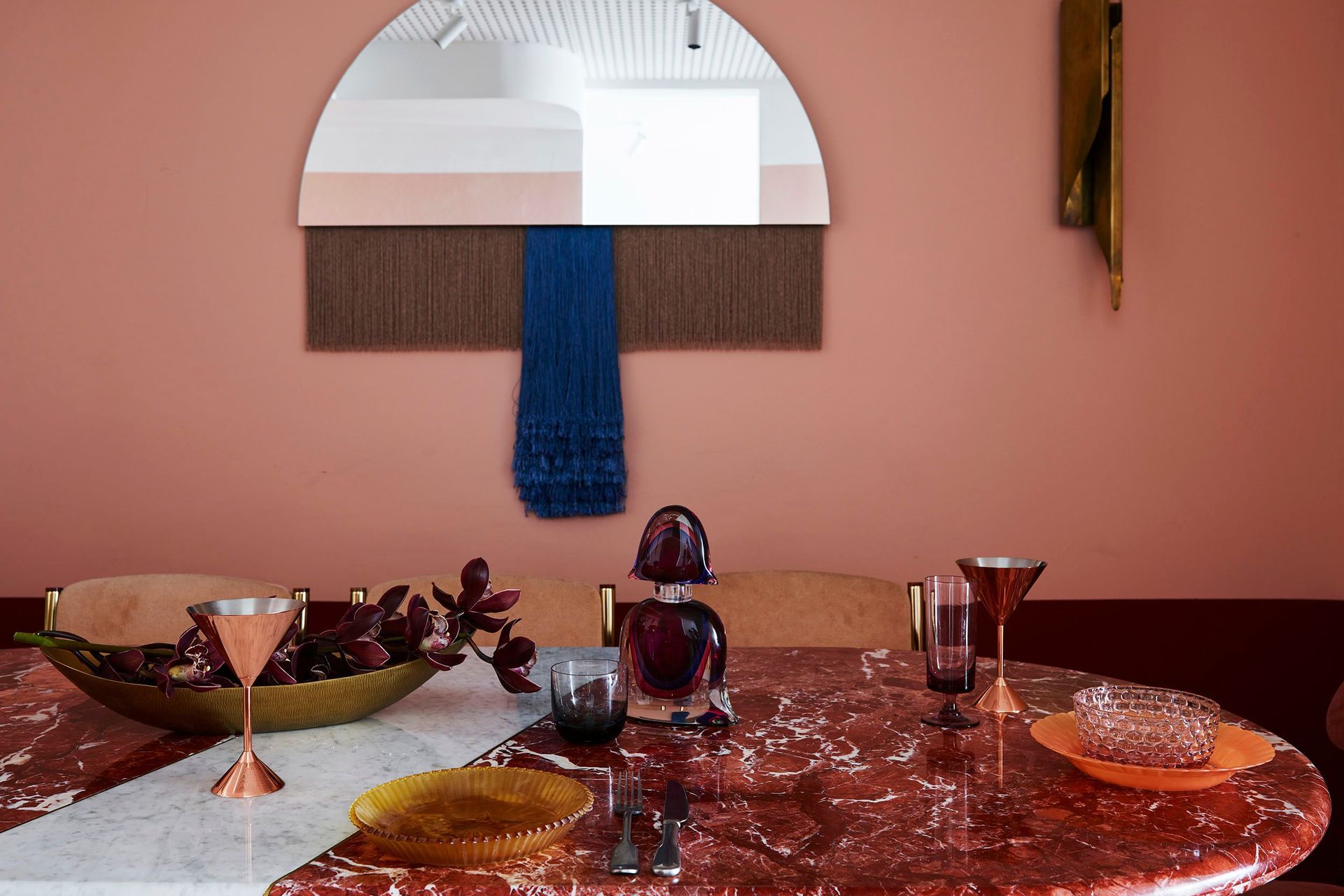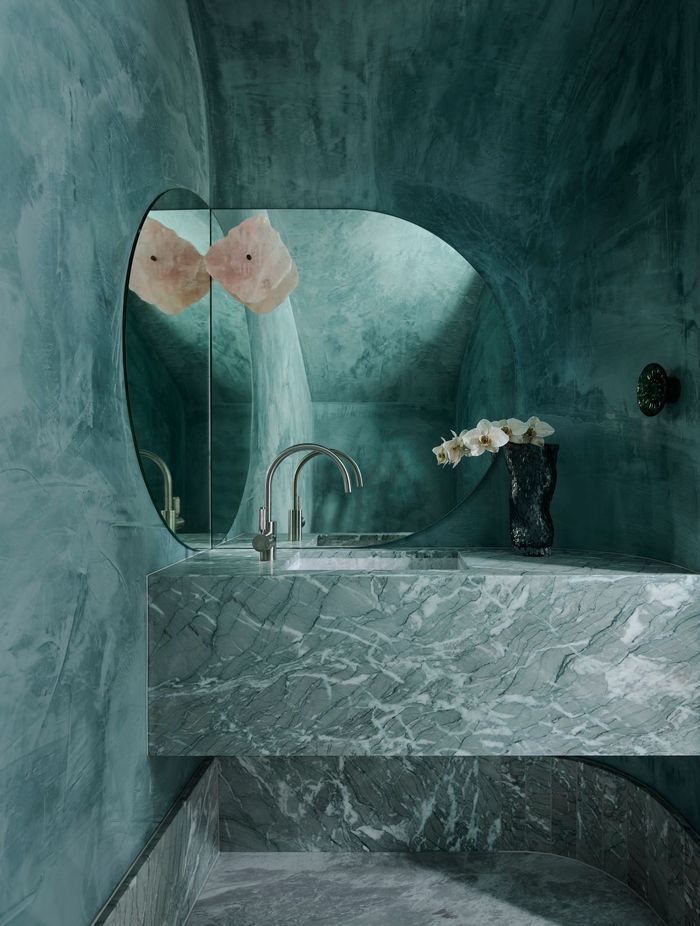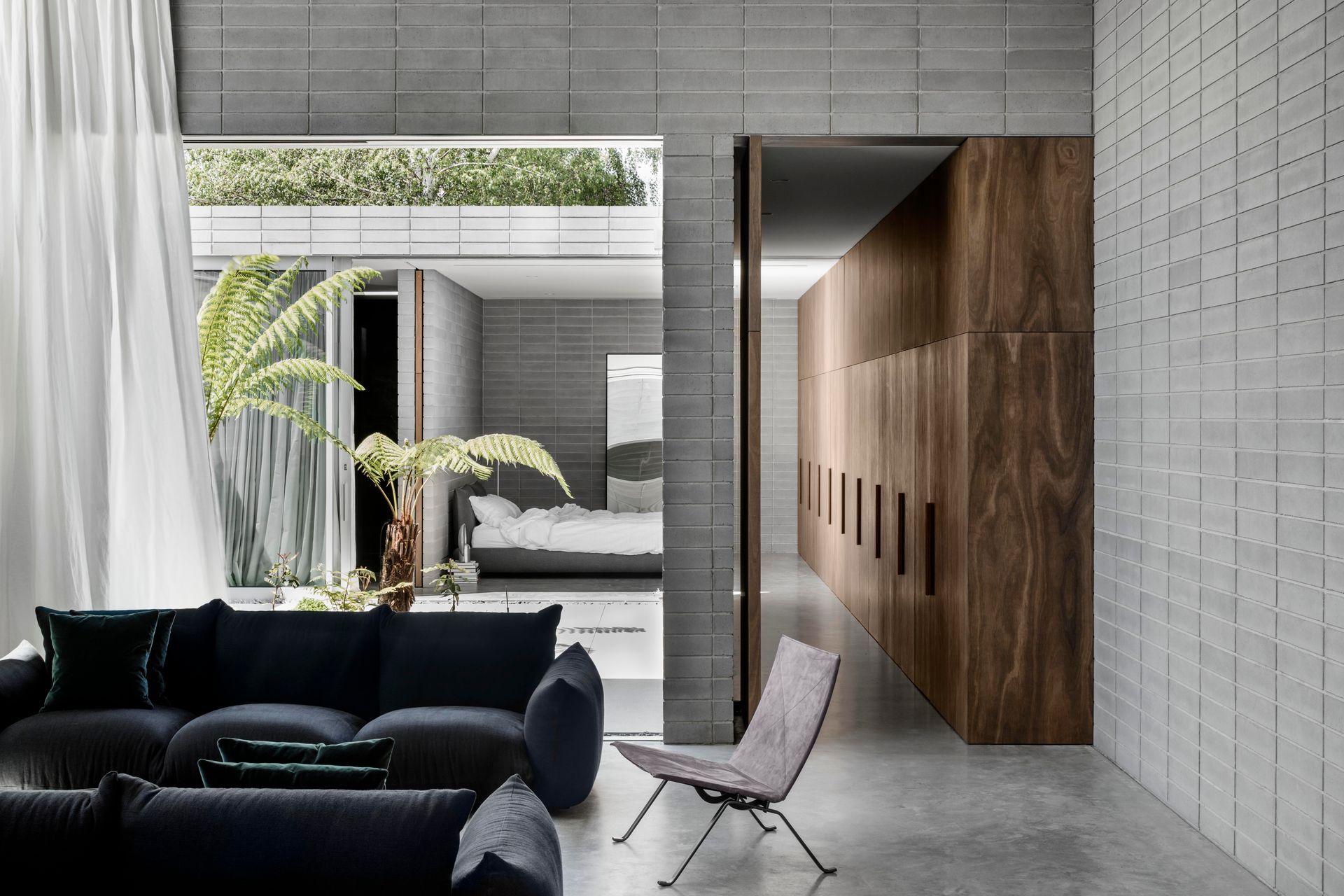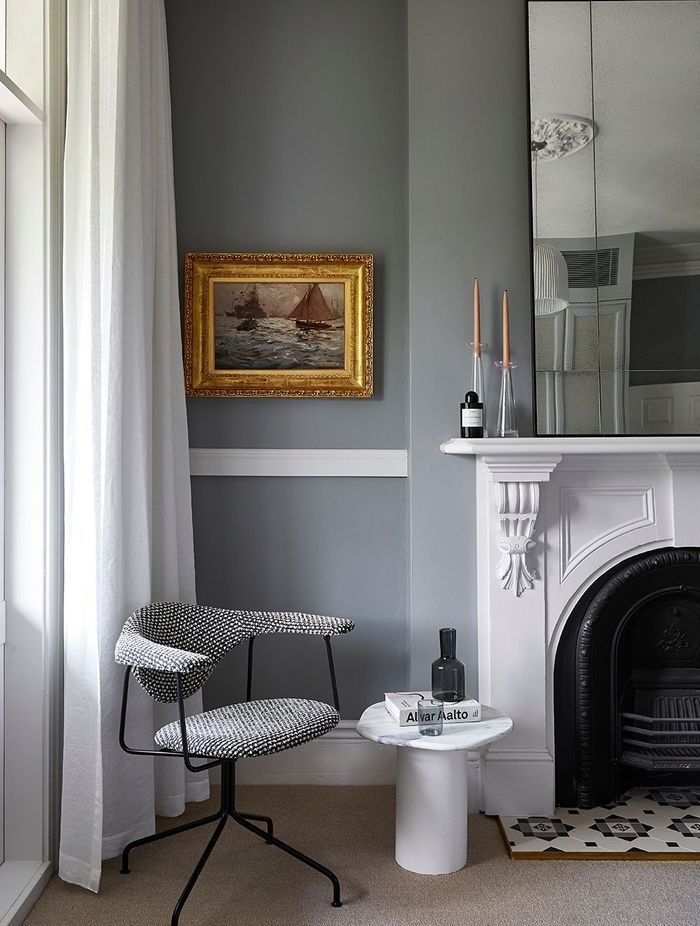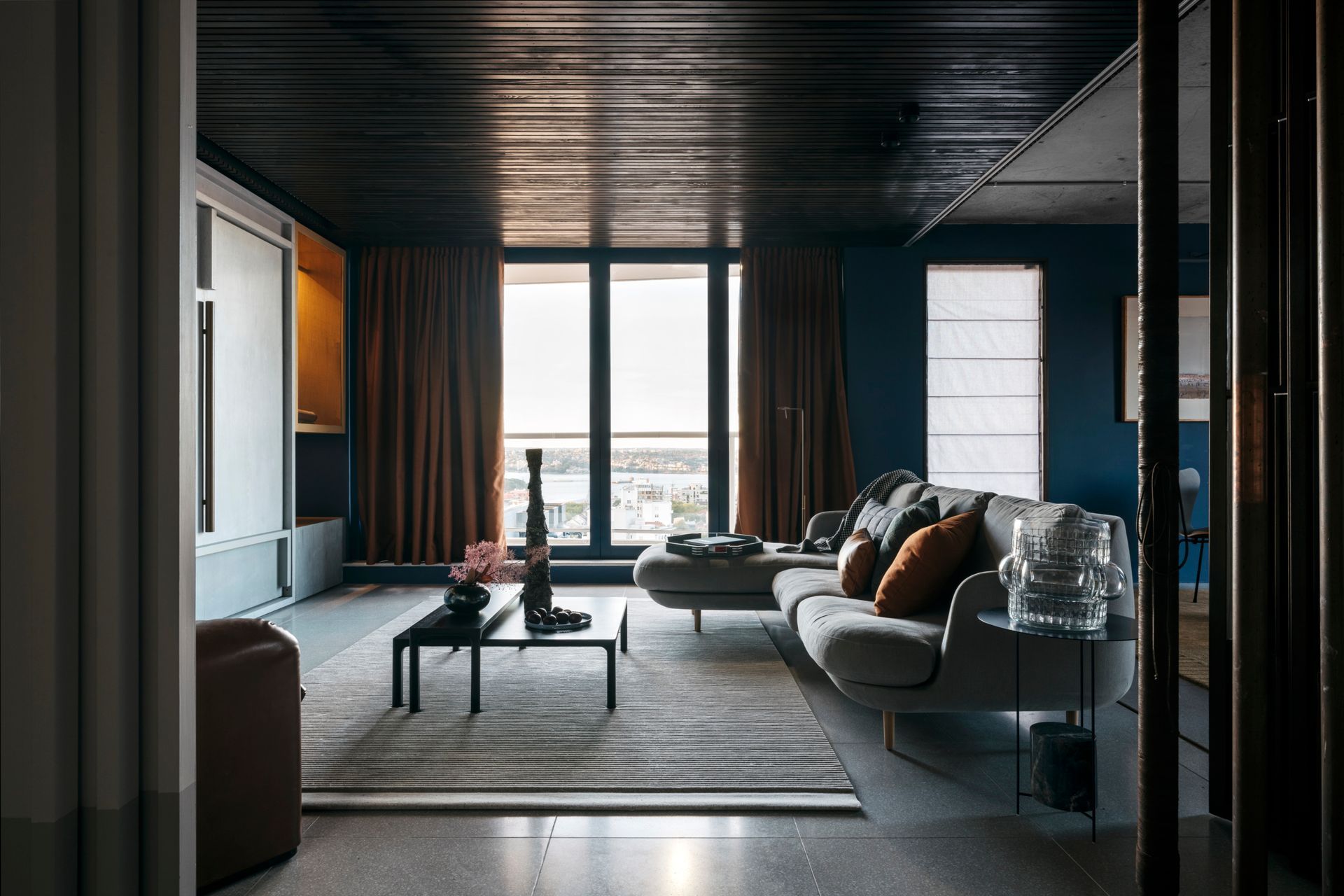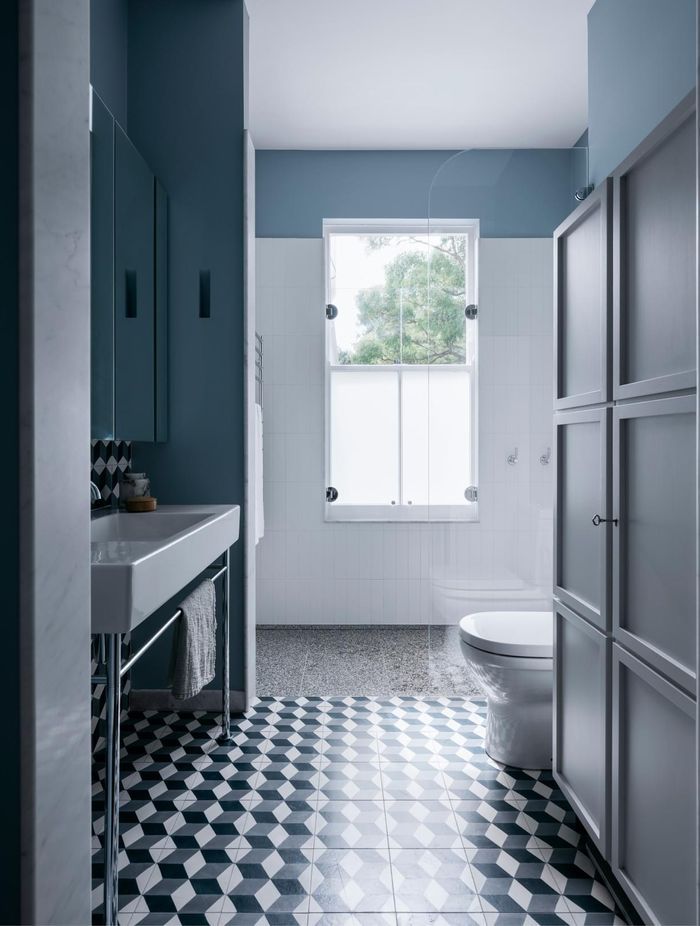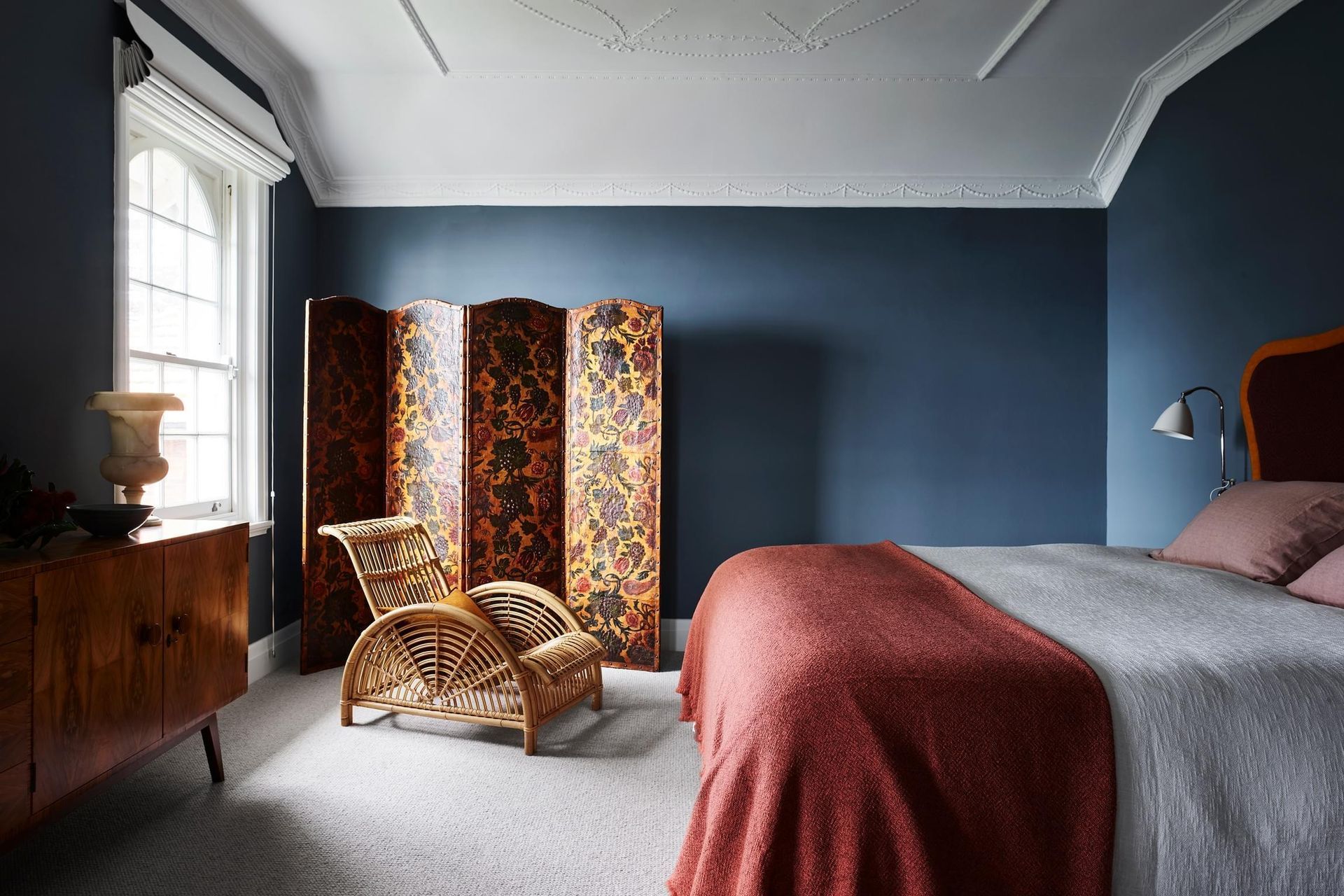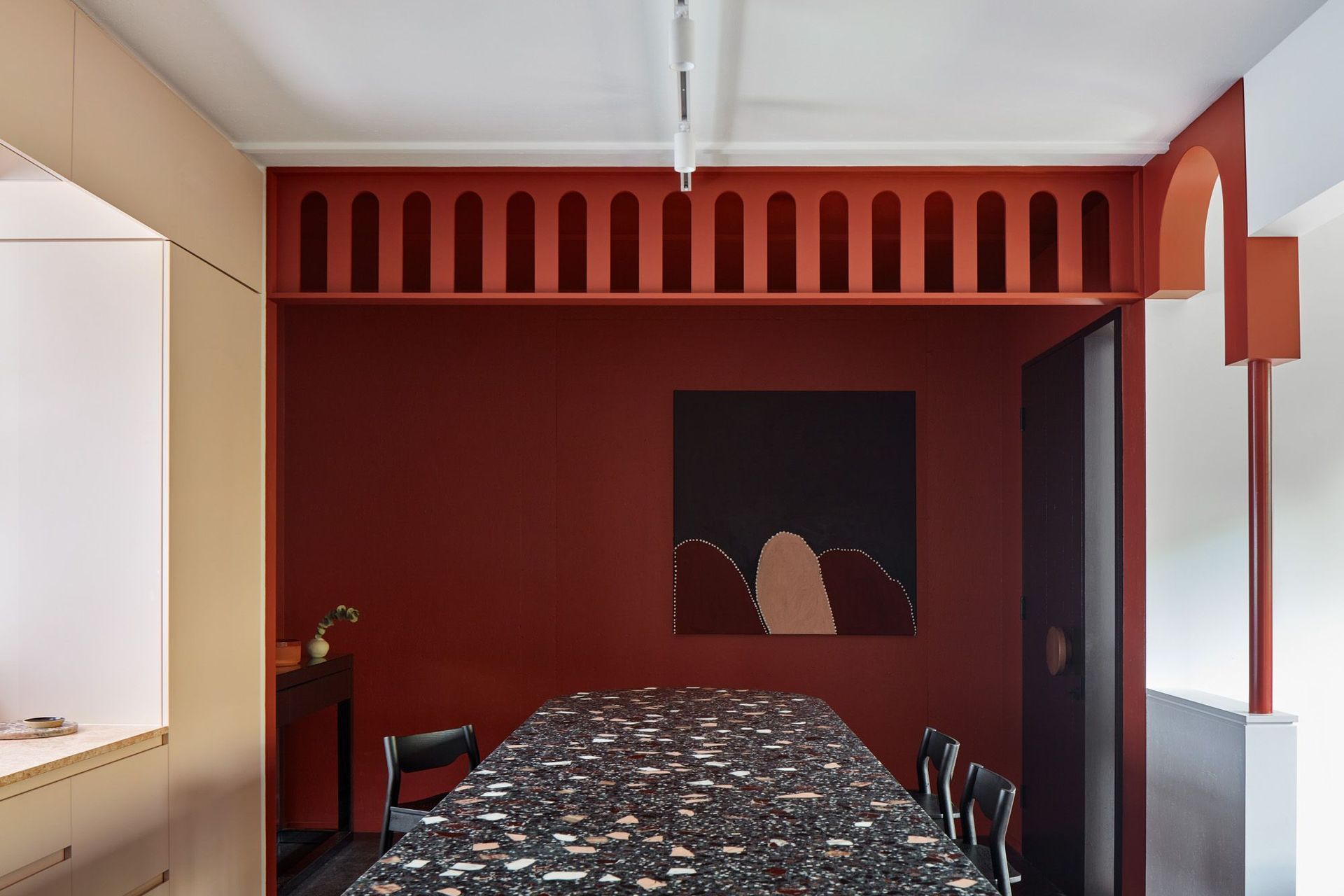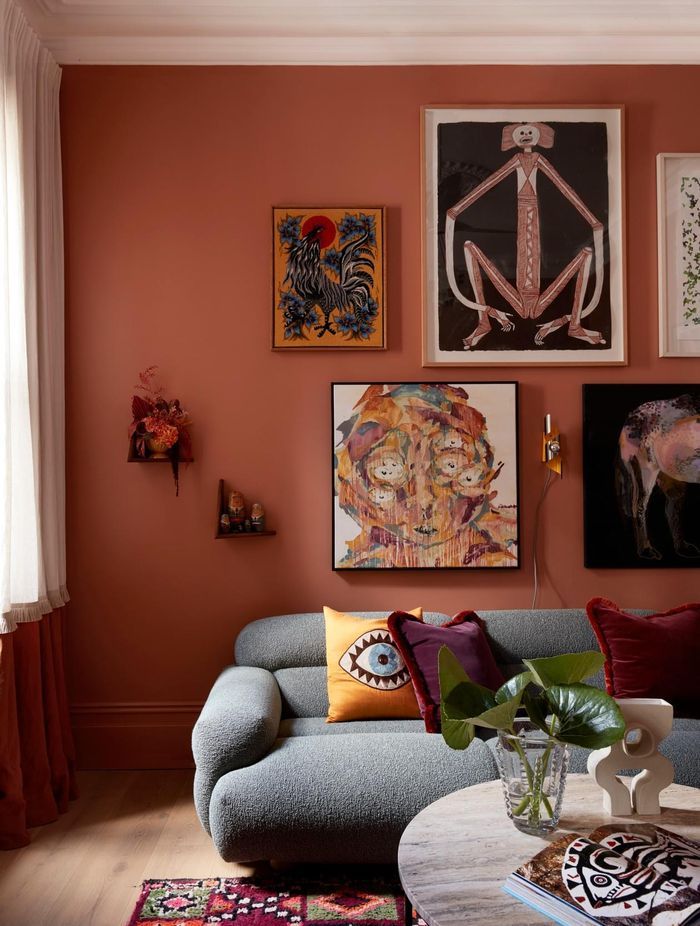6 unexpected paint colours to use in small spaces
Written by
07 December 2022
•
3 min read

When it comes to making a small space appear larger, common counsel recommends a light, bright colour scheme with white-washed walls as the go-to solution. The logic behind this is that all-white walls reflect light best, thus making the space feel more expansive. While technically true, all-white can often be static and one note, resulting in a lack of nuance in the hue due to it reflecting all colours at once. Cross over to the dark side and you’ll find it filled with subtlety and dynamism; deep wall shades change with the light, showcasing different undertones and adding interest to the space.
In the same way that all-white walls reflect light and make the space look larger, darker colours have the same effect, albeit with the opposite mechanism of action. Dark walls – gasp! – absorb light, giving the illusion of more space by blurring the edges of the walls. The lack of demarcation can create a more visually expansive room.
If you’re ready to ditch the textbook white walls and come over to the dark side, these are the best colours to try. From rich jewel tones to modern moody hues, these are the best dark paint colours for small spaces.
Green
Whether it’s hunter green, olive green or a Scandinavian-style grey-green, this versatile colour can do wonders for small spaces. Green has an inherent connection to nature, creating a calm and grounded atmosphere. Dark, forestial greens lend spaces a moody, contemplative tone, making them best for studies, libraries, living rooms and bathrooms. Meanwhile, lighter shades such as sage and mint have a soothing effect, making them an apt fit for bedrooms.
Brown
An often overlooked hue, brown is on the rise. Inextricably associated with the earth, brown is grounding and represents a sense of resilience in chaotic times. Comforting and enveloping, being surrounded by brown tones is akin to receiving a hug. Though white is often touted as the ultimate shade for minimalists, brown is able to add warmth and nuance to pared-back spaces while still being neutral and understated. In the same vein, it lends itself to more maximalist spaces. The depth and cosiness of brown shades make them well-suited to use in living rooms or bedrooms.
Grey
Looking for something equal parts sophisticated and chic? Grey is the way to go. Don’t worry, you needn’t use fifty shades; one carefully selected hue will do the trick. To create an intimate yet dramatic space, opt for monochromatic grey walls.
Blue
From classic navy to glamourous inky midnight, blue brings a sense of richness and opulence to a small space. A particularly good fit for small bathrooms and bedrooms, blue shades can be paired with white accents to create an elegant respite from the world.
Eggplant or plum
These fruit-inspired purple hues are unconventional yet luxurious. Combining the coolness of blue with the warmth of red, dark purple shades represent the best of both worlds. Although they’re an undeniable statement hue, they also act as a versatile backdrop for minimalist and maximalist decor alike.
Red
The fieriness and energy of red can be all-encompassing, making a room entirely bathed in red feel overwhelmed and claustrophobic. However, it can be a good accent colour, with a red feature wall providing cosiness and vibrance in equal measure. Team it with lighter, understated shades such as white, blush or beige.
Explore more interior styling advice on ArchiPro.
